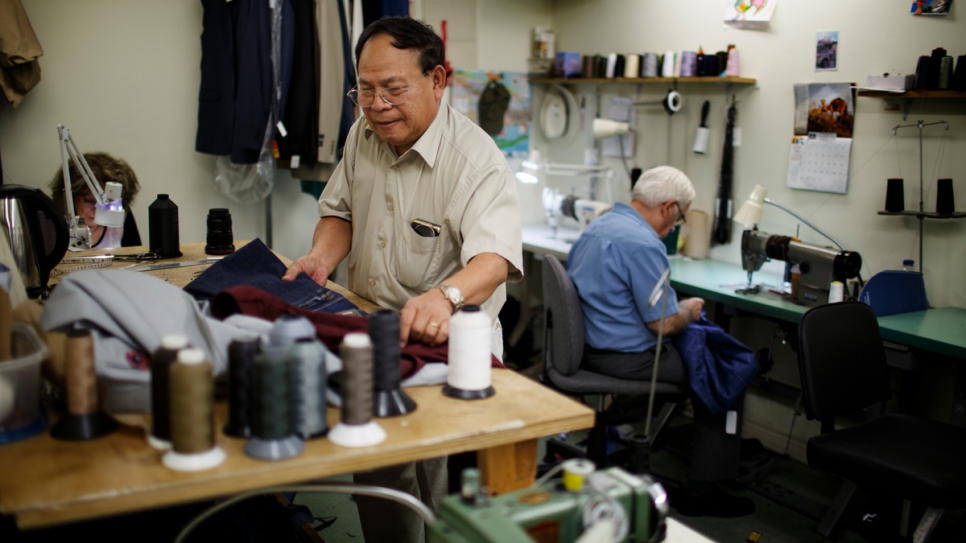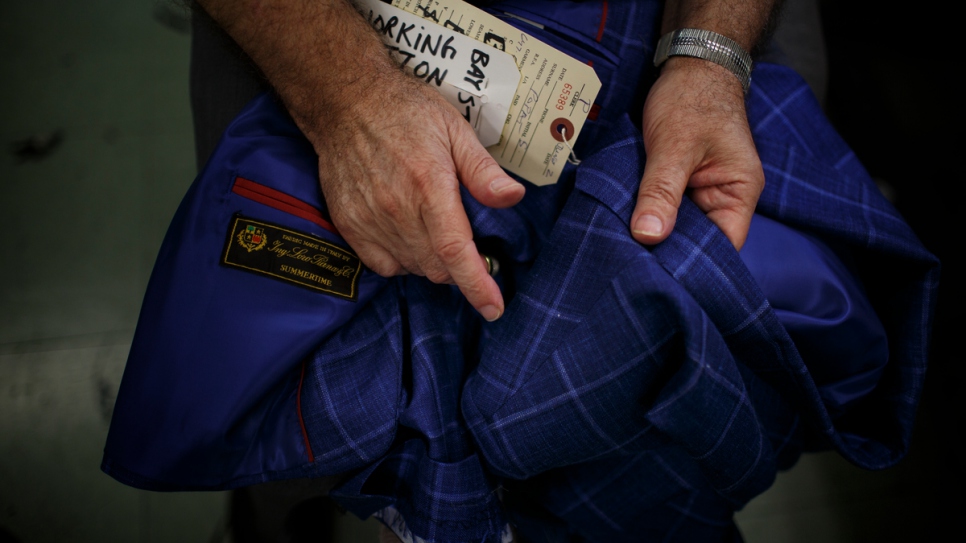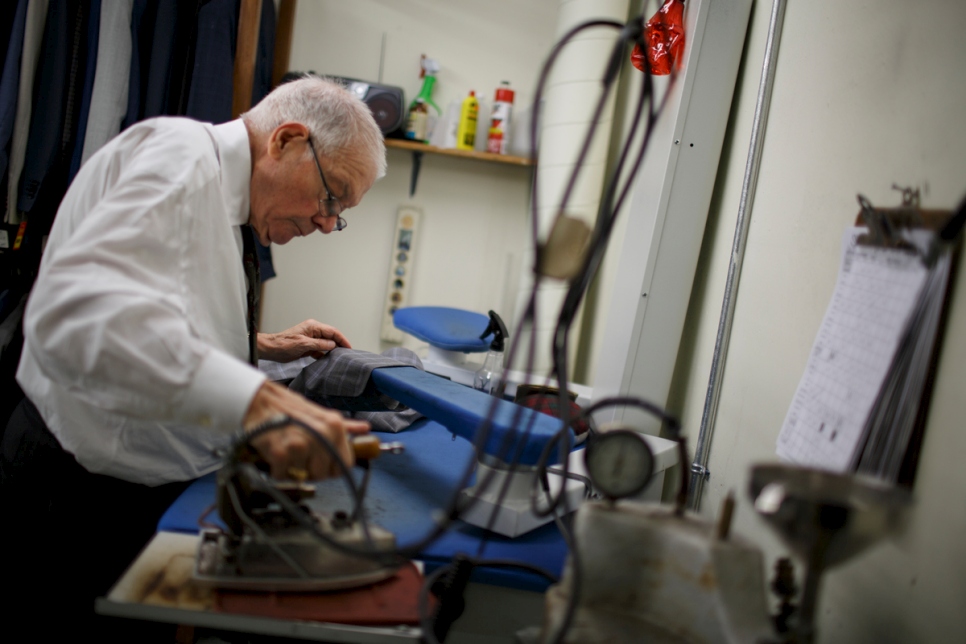The Hungarian entrepreneur who styled a new life in Canada
Fifty years ago, a boy fled Hungary and found sanctuary in Canada. Now he is living his dream by running his own business.
Tom Mihalik stands in his clothing shop in Toronto's Kensington Market.
© UNHCR/Annie Sakkab
Tom Milhalik sells suits at Toronto’s Kensington Market. Grey suits, blue suits. Suits for job interviews, funerals and weddings. His store’s popularity is testament to the determination and hard work he has shown since first arriving as a refugee from Hungary in 1967.
“You could open a store in Kensington Market and it didn't really matter where you came from,” Tom recalls. “Didn't matter what language you spoke, didn't matter what colour, what religion. All you had to do was prove yourself.”
The market has long served as a starting point for the displaced. Tom’s father, William Mihalik, set up his suit store there after fleeing the Hungarian uprising in 1956. For 12 years, the family were forced to live apart.
"All you had to do was prove yourself.”
In his absence, William was a powerful figure in his son’s imagination – informed by the gossip and stories Tom heard from friends and family.
“Everyone in Hungary said: ‘Tommy you're going to the land of honey and milk!’” he says, laughing. The details were scarce – all he knew was William owned a store selling clothing and furniture – but he filled in the gaps with youthful fantasy.
Tom recalls the excitement of his first visit to his father’s store in downtown Toronto.
But, as they passed by William’s shop, its windows protected by thick iron bars, Tom’s heart sank. “It was a gloomy night… my dad pointed out where our store was. He was very proud of it. It was not what I imagined. I imagined something grandiose.”
Before and after school, Tom worked at the shop. It soon became an obsession. In time, it expanded and moved down the street, still remaining in Kensington Market.
After he bought the business from his father in 1987, Tom quickly learned how close-knit the area was. The cost of staffing and overheads overwhelmed the trickle of money flowing into the coffers, leaving him unable to pay rent.
“I went to my neighbour and I asked if she could lend me eight hundred dollars, and she immediately said, 'Tom, it would be our pleasure,’” he says. “It shows you how strong the community was. Without even blinking an eye, she lent me the money.”
Tom’s brush with insolvency confirmed what he has learned over the years – community matters.
“When you come to a community like Kensington Market, when you came from nothing – totally nothing, and you’re the weakest link – where you prosper, you have to give some of that money back. You have to. It's your responsibility to give back to the community.”
Since the Mihaliks arrived in the 1950s and 1960s, the market has also hosted the businesses of refugee entrepreneurs from Somalia, Ethiopia and Vietnam.
The market has changed dramatically over time – grocery and appliance stores have been replaced by cafes and clothing outlets. But Tom’s store has remained largely unchanged, cementing his status as a fixture of the neighbourhood.
In the back of Tom's shop, a row of tailors work meticulously on heaps of clothing, representing the legacy of the market. Tran Duc Tu, who fled Vietnam as a refugee in 1977, has worked with Tom for 15 years.
During this time, Tom has received many awards and commendations for his contributions to charities, hospitals and people down on their luck.
"It's your responsibility to give back to the community.”
“We have a responsibility as Canadians to make sure we also give back to this great country. Not only do we just take – we also have to give back,” he says. “It's really what you put in – as a Canadian. You will see it in your children and your grandchildren.”
He credits much of the store’s success not to his business acumen, but the steadfast support of his family. “My sister has been here in the store since she was 12, 13, 14 years old,” he says. “My mom, until her death, never missed a day.”
Tom’s son, Tom Jr., now runs a recently-opened second branch in the heart of Toronto’s financial district. While the well-stocked shops there looks nothing like the first shop opened by William in his early days in Canada, the current form remains loyal to its origins.
“We really, really put in a lot of work to get where we are today,” says Tom, surveying the rows suits in the quiet of the shop after hours. “Hopefully we can still continue to work another 60 years.”
Then and Now is a series of stories profiling refugees who have come to Canada over the years, in search of safety, stability and a chance at a better life. Starting from 1956, when Canada accepted its first major intake of refugees, the project uses archived images and family photos to tell the stories of refugees from Hungary, Viet Nam, Uganda, Somalia, Colombia, Cambodia, Burundi and El Salvador.






